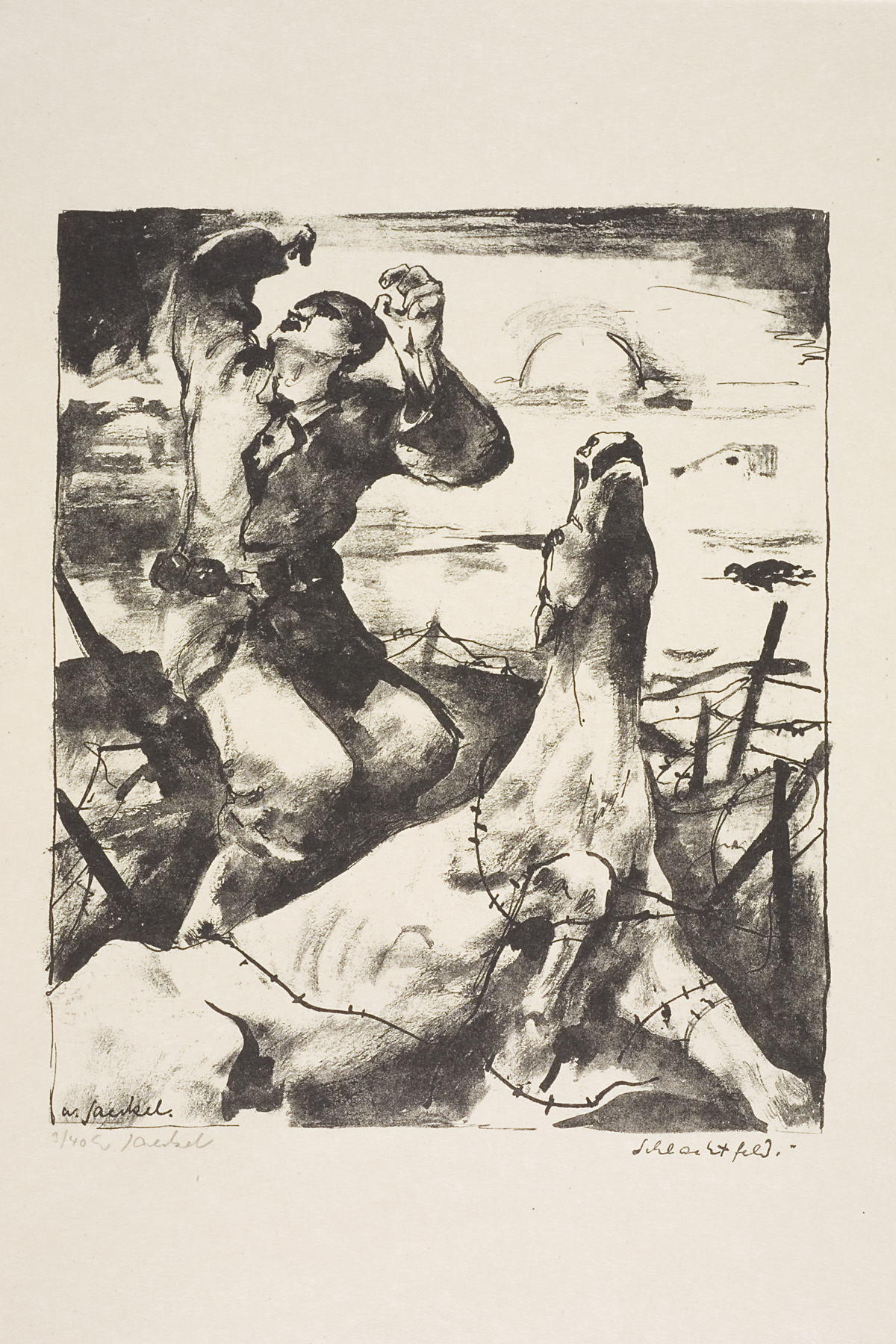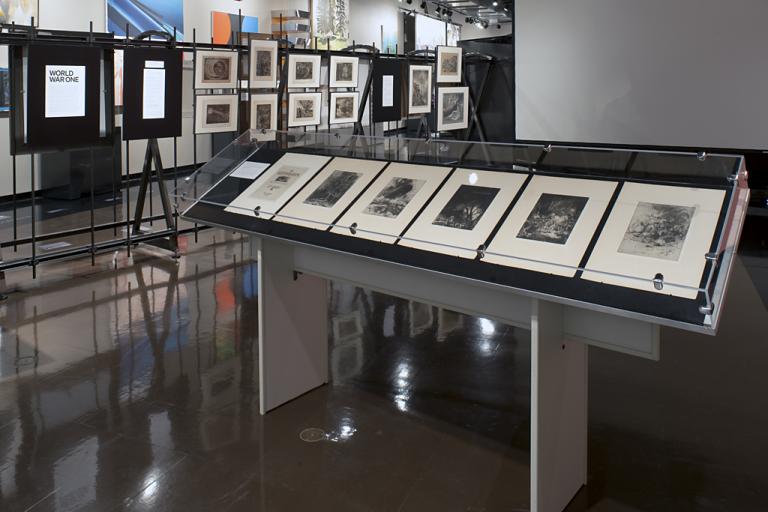Schlachtfeld (Battleground), Willy Jaeckel
Artwork Overview
Willy Jaeckel, artist
1888–1944
Schlachtfeld (Battleground),
1915
Portfolio/Series title: Krieg und Kunst. Original-Steinzeichnungen der Berliner Sezession (War and Art. Original Lithographs from the Berlin Secession)
Where object was made: Germany
Material/technique: laid paper; lithograph
Dimensions:
Image Dimensions Height/Width (Height x Width): 258 x 220 mm
Image Dimensions Height/Width (Height x Width): 10 3/16 x 8 11/16 in
Sheet/Paper Dimensions (Height x Width): 406 x 340 mm
Sheet/Paper Dimensions (Height x Width): 16 x 13 3/8 in
Mat Dimensions (Height x Width): 19 x 14 in
Image Dimensions Height/Width (Height x Width): 258 x 220 mm
Image Dimensions Height/Width (Height x Width): 10 3/16 x 8 11/16 in
Sheet/Paper Dimensions (Height x Width): 406 x 340 mm
Sheet/Paper Dimensions (Height x Width): 16 x 13 3/8 in
Mat Dimensions (Height x Width): 19 x 14 in
Credit line: Museum purchase: Letha Churchill Walker Fund
Accession number: 2008.0018
Not on display
If you wish to reproduce this image, please submit an image request





